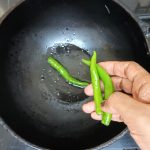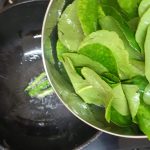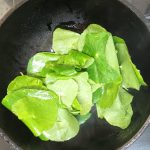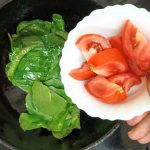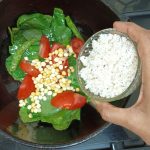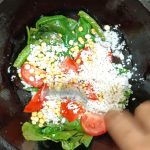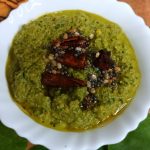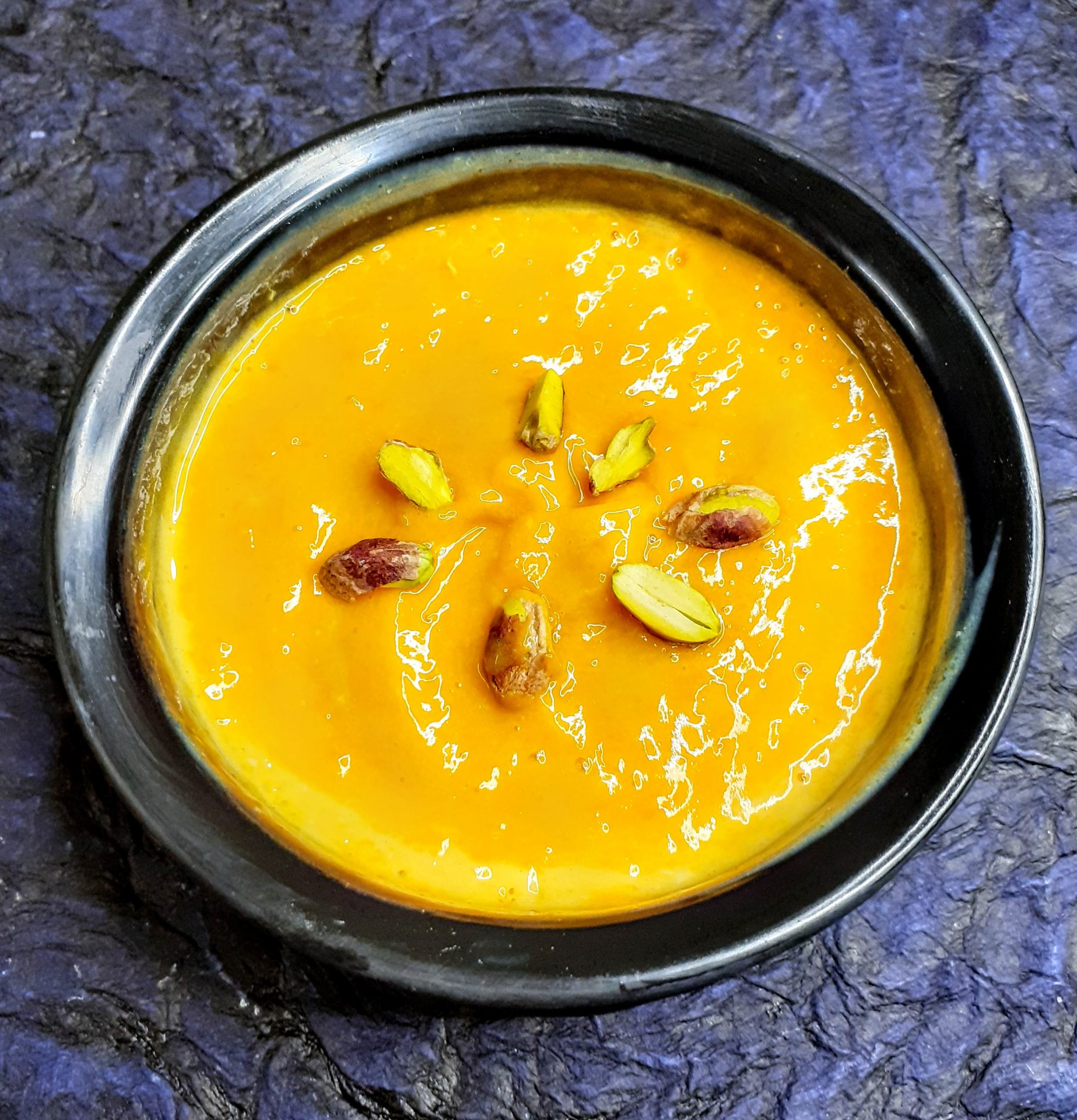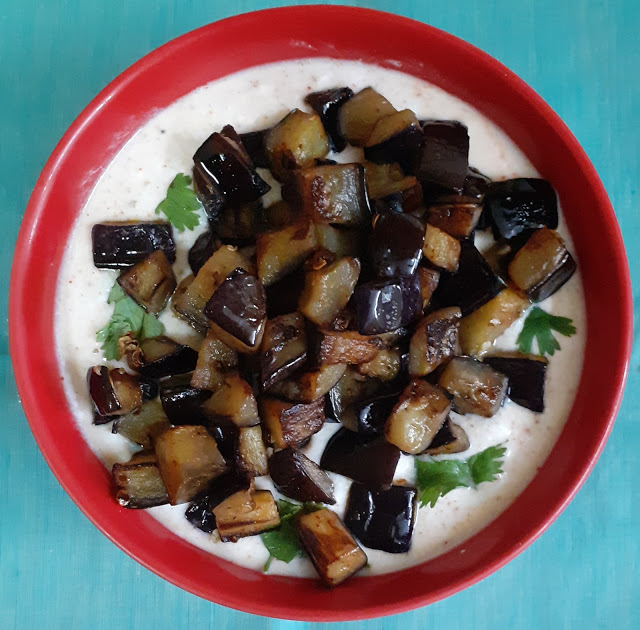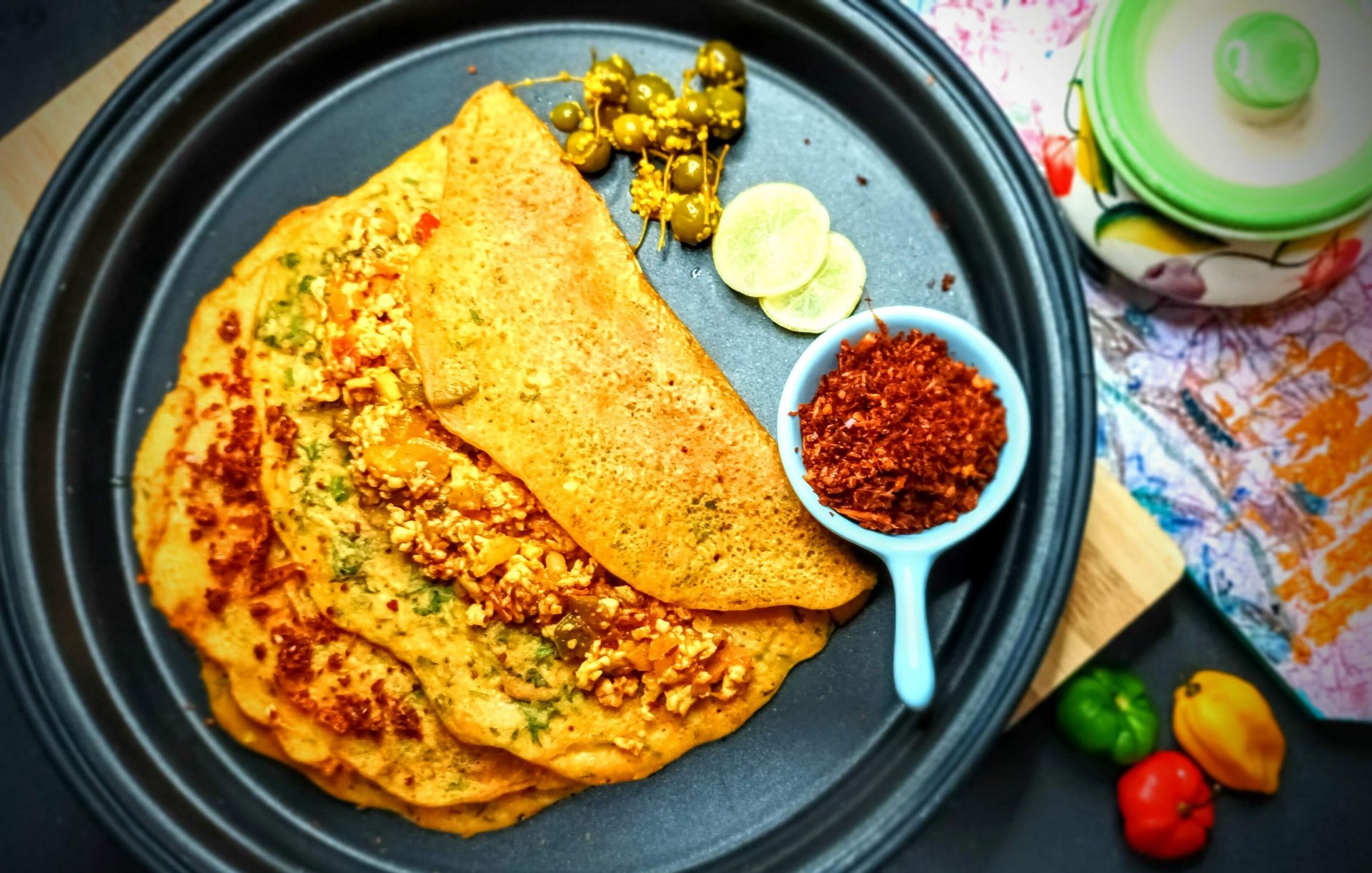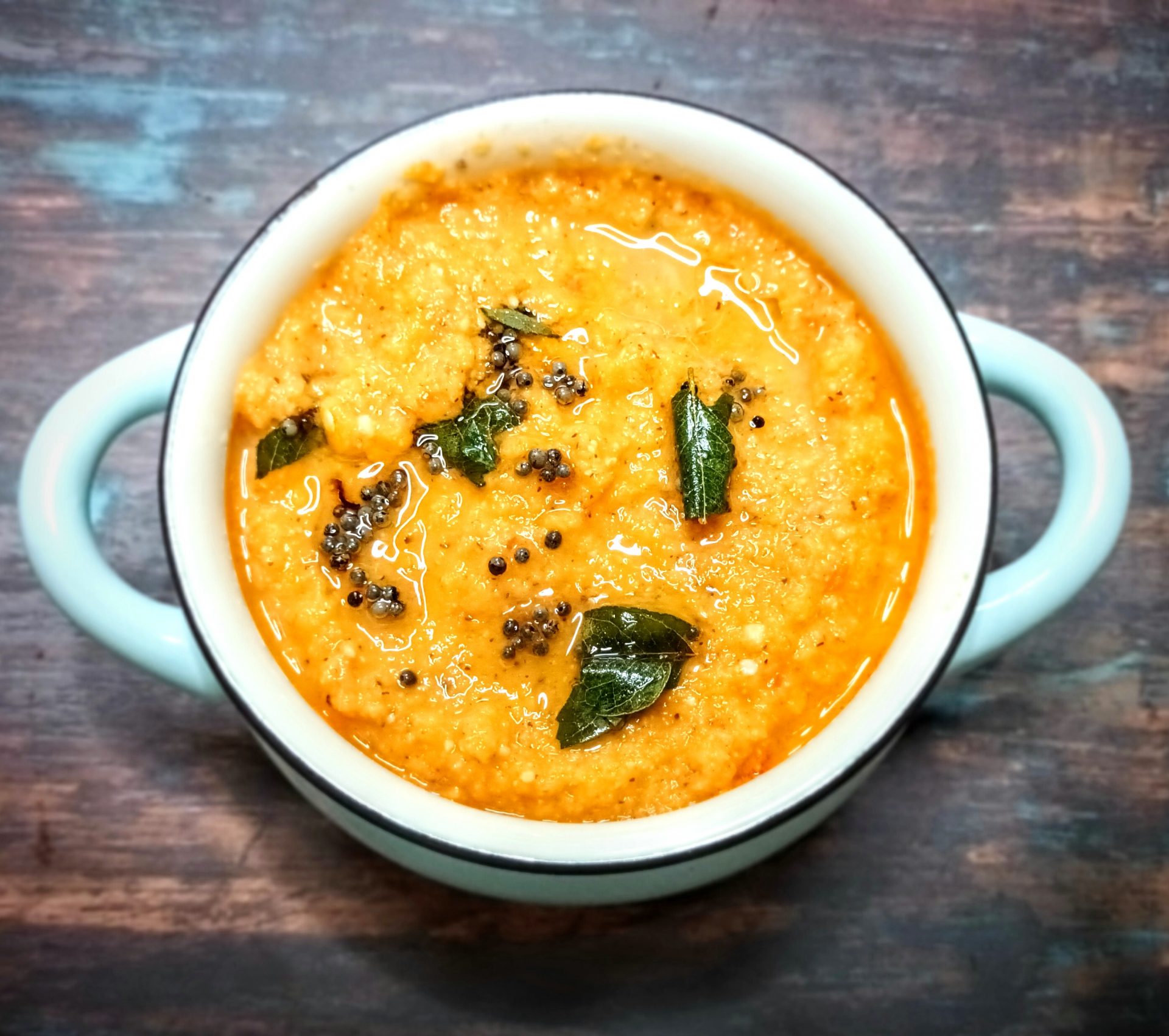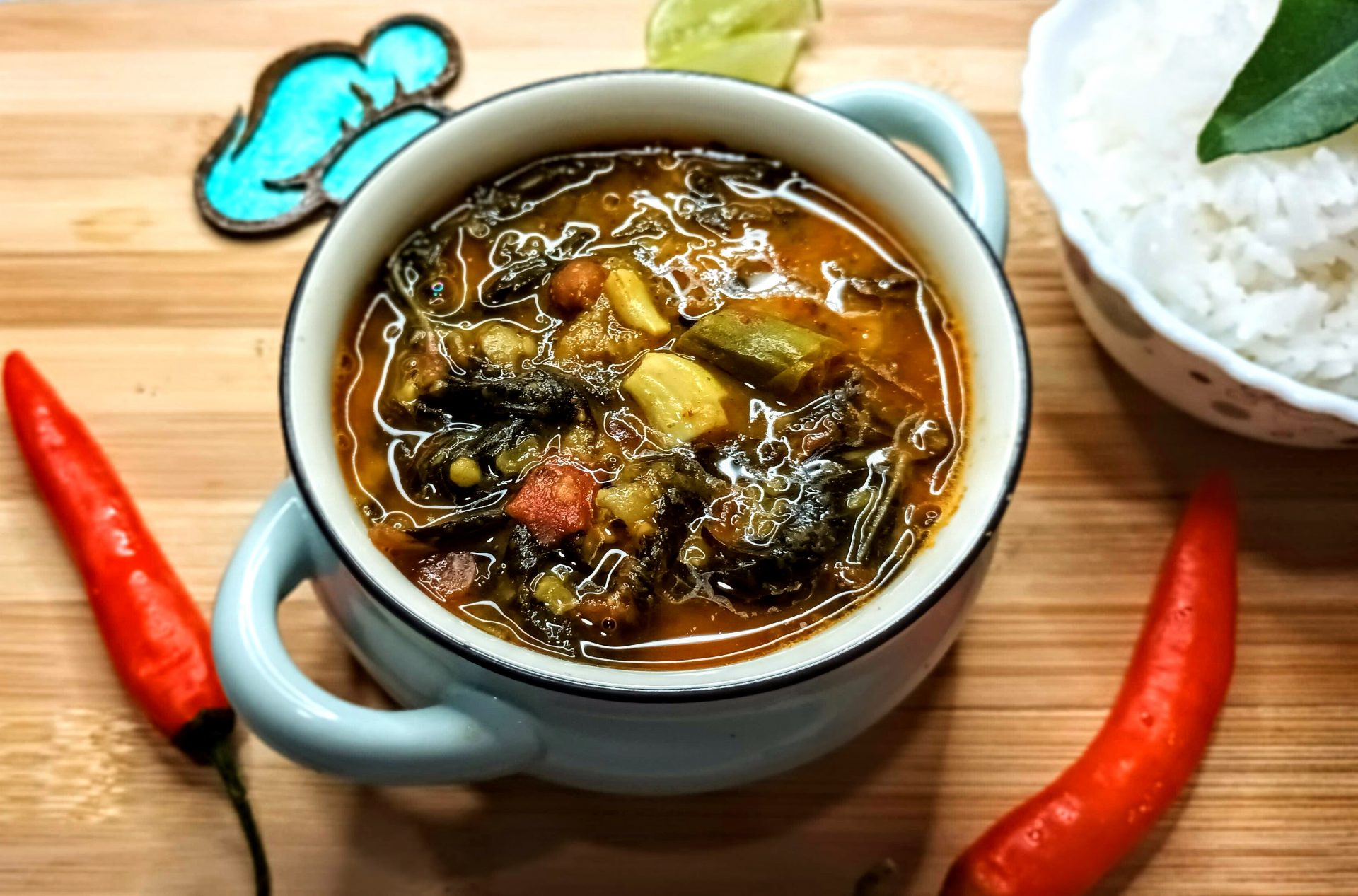Brahmi Leaves Chutney/ Vallarai Keerai Chutney
Jump to recipeBrahmi Leaves, also called Saraswathi is a powerful medicinal herb. Interestingly, it is called “Mandukaparani” in Sanskrit, which means “Frog like feet”, and rightly refers to the leaves of the herb. It is a short, perennial creeper which grows in tropical and wet climate. Growing up I knew these leaves only to be a part of hair oil. This hair oil was marketed as an oil which promotes hair growth, due to the use of the Brahmi leaves. It is only recently that I read up more about these leaves. Since I didn’t know any specific recipe with these leaves, I would grind the leaves and mix it with Dosa batter . Recently, I came about this recipe on Social media.
The original recipe is given by Madam Krishna Kumari Jayakumar. She is an expert with Millets, native and indegineous rice varieties and health food recipes. When she recently posted the recipe on her social media handle, I had to lap it up, because- firstly it is green(and you know my love for greens by now), secondly it is healthy, and this becomes a far bigger reason for me to publish it here, so that more and more people can reap its health benefits. After making this chutney, I asked Madam Krishnakumari if I could blog the recipe, and she agreed immediately. Can’t thank her enough for this.
Before I proceed with this simple recipe- enumerating a few health benefits of Brahmi/Vallarai Keerai/ Gotu Kola leaves.
- Brahmi strengthens memory and intellect and supports focus and concentration.
- It promotes healthy hair and radiant skin
- It nourishes the joints
- Brahmi also supports the circulatory, digestive and nervous system.
A word of caution- Usually in chutneys, we find the use of some Citric agent like Tamarind or Lemon. While it is okay to add lemon for some tanginess, the use of Tamarind should be avoided. This is because Tamarind affects the medicinal properties of Brahmi.
While these leaves can also be made into a tea, I have learnt recently that they can be used in Salads, Dals and many more everyday dishes. So, what’s to stop us. Eat healthy, Eat right !
Since this is a very simple dish, I am not giving the step wise recipe. I am attaching a few pictures as a guide to help one know how to proceed.
While you are here I request you to look up the other chutney recipes on the blog lkke Raw/Green Tomato Chutney, Coconut Tomato Chutney, Til Ki Chutney, Red Chilli Chutney and many more.
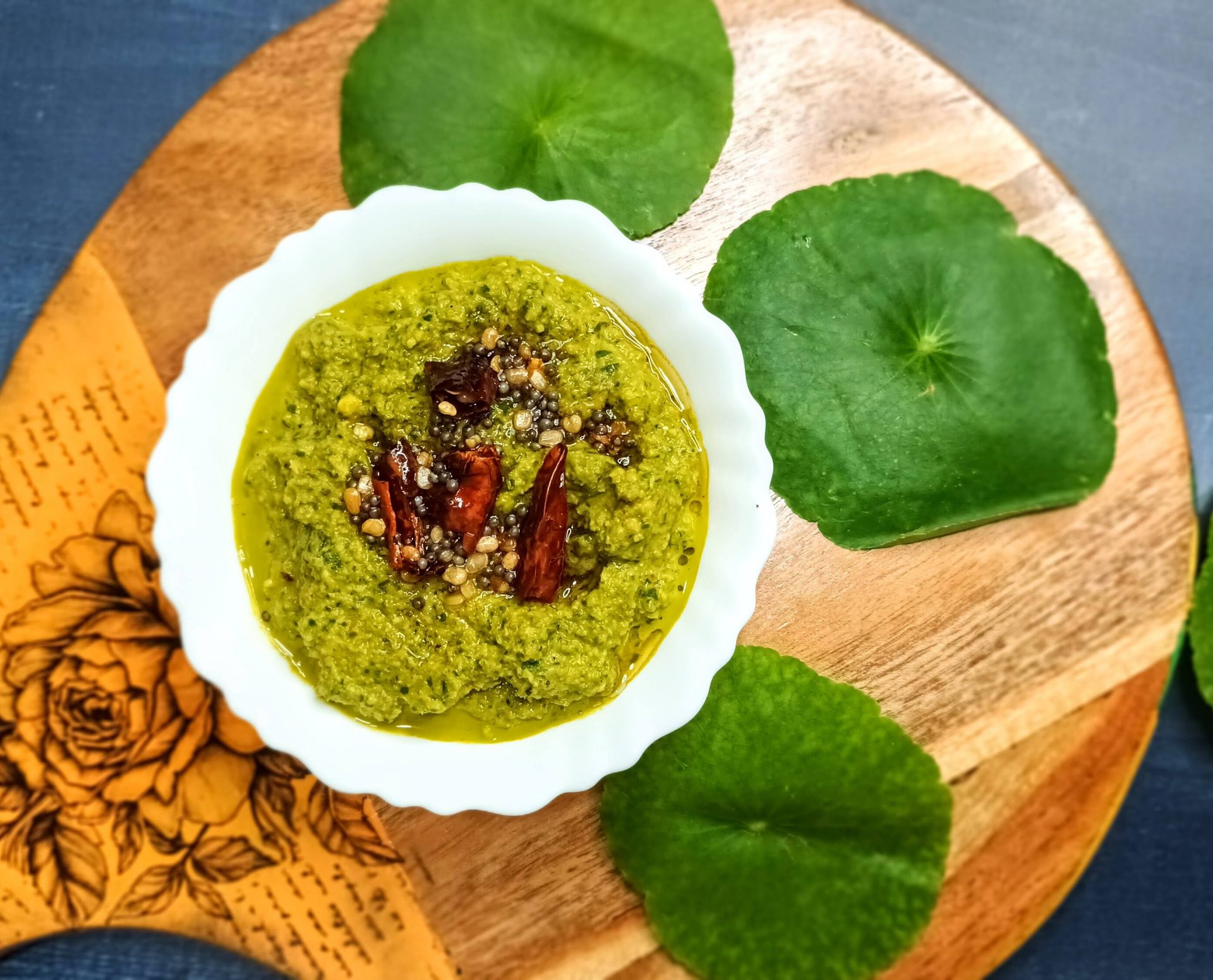
Ingredients
- Brahmi Leaves 100 gm chopped or whole
- Tomato 2 small or 1 1/2 large ones (read note 1)
- Coconut gratings 2 tbsp
- Fried Gram Dal/ Chutney chana 1 tbsp
- Green chillies 3
- Salt as required
- Juice of 1/2 lemon (Optional)
- Water for grinding ( read note 2)
- Oil for sautéing and tempering 2 tbsp (divided)
- Mustard seeds 1 tsp
- Urad Dal/ Split Black Lentils 1 tsp
- Whole dry Red Chilli 1
- Asafoetida 1/4 tsp
- Wash and drain the Brahmi leaves and set aside. Take oil in a pan/kadai and heat. To this add the green chillies, and fry for 30 seconds. Now add the leaves and fry until they wilt a bit. Add the tomatoes and continue to saute. Now add the Fried Gram dal followed by the coconut, and salt, and saute everything together until the tomatoes become a little tender and the leaves wilt further. Leave to cool. Now put this mixture into a blender jar and grind to the desired consistency adding a little water. If using lemon juice, add it now and give everything a good mix. Finally take oil in a tadka Kadai,, and add mustard seeds and when they splutter add the Urad dal followed by asafoetida. Pour the Tadka into the chutney and enjoy its benefits with Idli, Dosa, Apam and more.
Notes:
- I have used country Tomato/Naatu Thakkali/ Desi Tamatar in this recipe, as Tamarind should not be used here for the citric taste. As the country Tomatoes are a little sour, they balance the flavour well.
- The water used to grind the chutney will depend on the consistency of the chutney. I used about 1/4 cup, and I also ground the chutney a little coarse.
- Lemon juice can be added as a substitute for tamarind. However the juice should be added towards the end.
- A word of caution- Usually in chutneys, we find the use of some Citric agent like Tamarind or Lemon. While it is okay to add lemon for some tanginess, the use of Tamarind should be avoided. This is because Tamarind affects the medicinal properties of Brahmi.
Gallery
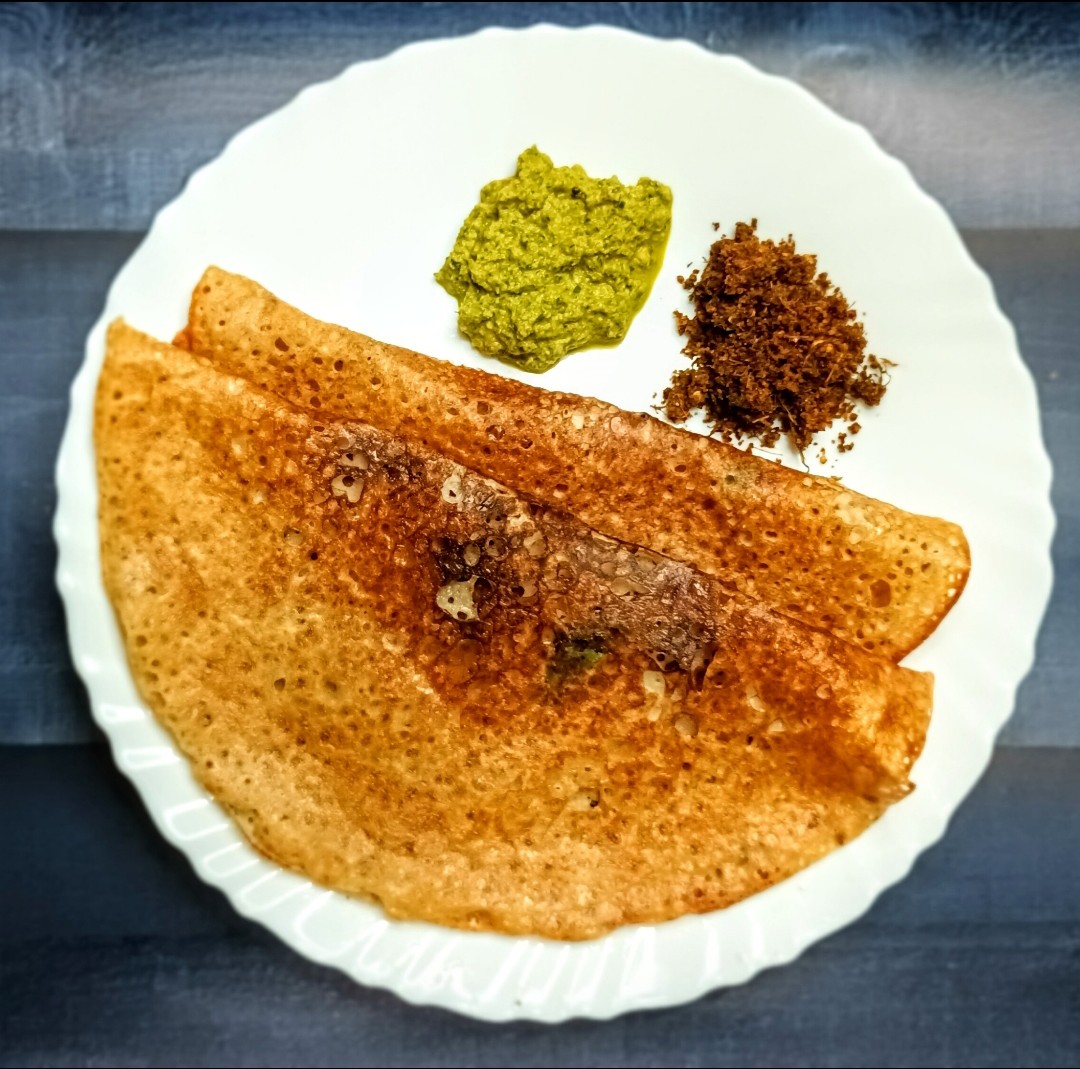
Get yummy recipes delivered to your inbox!
Be the first one to know about our new recipes. Leave your email below and get notified as soon as new recipes are published!

